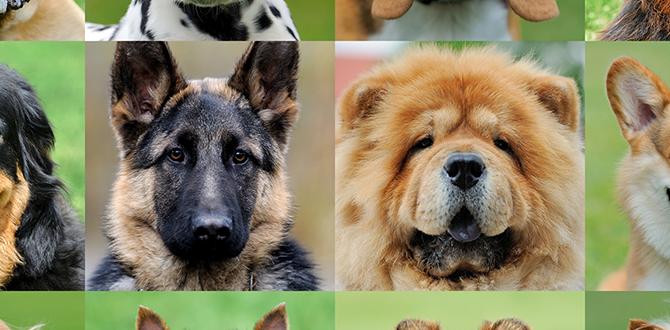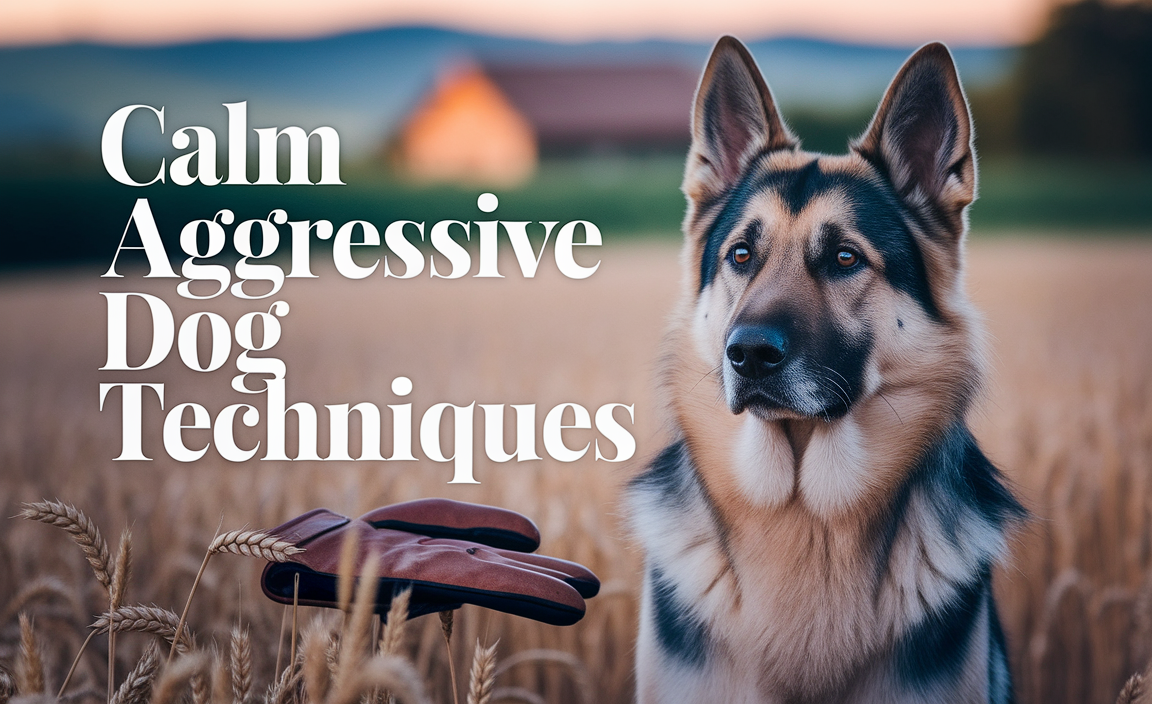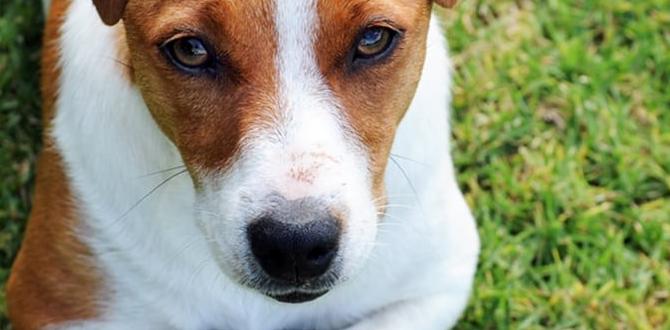Quick Summary: Dog chasing cars can be dangerous. Proven fixes involve understanding the instinct, consistent training, management techniques, and ensuring your dog’s needs are met. With patience and the right approach, you can significantly reduce or eliminate this risky behavior.
Seeing your beloved dog take off after a moving car can be a heart-stopping experience. It’s a common, yet incredibly dangerous, behavior that leaves many pet parents feeling helpless and worried. The sheer speed and unpredictability of vehicles make it a recipe for disaster. But don’t despair! Many dogs exhibit this chasing instinct, and with the right understanding and techniques, you can implement effective solutions. This guide will walk you through proven strategies to help your dog stop chasing cars and keep them safe.
Why Do Dogs Chase Cars? Understanding the Instinct
Before we dive into solutions, it’s helpful to understand why dogs chase cars. This behavior often stems from deeply ingrained instincts.
- Prey Drive: Many dogs, especially herding breeds or those with high energy, possess a strong natural prey drive. Moving objects – cars, bikes, squirrels – trigger this instinct to pursue. The movement itself is an invitation to chase.
- Boredom and Pent-Up Energy: A dog that isn’t getting enough physical or mental stimulation might resort to chasing things out of sheer boredom or to release pent-up energy. Cars are large, fast, and readily available moving objects.
- Excitement and Frustration: For some dogs, the sight of a car can be exciting, and the inability to reach it can lead to frustration-induced chasing. They might also be reacting to the noise.
- Learned Behavior: If a dog has chased cars before and found it rewarding (even if just for the chase itself), they are likely to repeat the behavior.
- Territoriality: Some dogs may view cars entering or passing their perceived territory as a threat or an intrusion, leading to a chase response.
Understanding your dog’s specific motivation is the first step in addressing the behavior. Is it a high-energy chase, a territorial bark, or just plain boredom? Observing your dog can offer clues.
Managing the Risk: Immediate Safety Measures
While you’re working on training long-term solutions, it’s critical to manage the risk of your dog chasing cars. Safety first is the absolute priority.
Leash and Harness Strategies
This is your most immediate tool. Always keep your dog on a leash when outside, especially in areas where cars are present.
- Sturdy Leash: Use a durable, non-retractable leash (at least 6 feet long). Retractable leashes can be dangerous as they offer less control and can break.
- Secure Harness: A well-fitting harness can prevent escape better than a collar alone, especially for strong pullers. Look for harnesses that clip at the front for better control. Avoid flimsy collars that could slip off.
- “No Pull” Training Aids: Consider a front-clip harness or a head halter if your dog is a strong puller and you need extra control. Always introduce these gently and positively.
Secure Fencing and Outdoor Access
If your dog has outdoor access, ensure your yard is securely fenced.
- Height and Depth: Fences need to be tall enough to prevent jumping over and deep enough or have barriers at the base to prevent digging under.
- Gate Security: Gates are common escape points. Ensure they latch securely and consider a second gate for added security if you’re frequently entering or exiting.
- Supervision: Never leave a dog prone to chasing cars unsupervised in the yard, even if it’s fenced.
Awareness and Environmental Control
Be mindful of your surroundings.
- Avoidance: If possible, avoid walking your dog in areas with heavy traffic or frequent car activity, especially during the initial training phases.
- Distraction: If you see a car approaching and know your dog might react, try to distract them with a high-value treat or toy before they focus on the car.
Training for Success: Proven Dog Chasing Cars Solutions
Once immediate safety is managed, you can begin implementing training strategies. Consistency and positive reinforcement are key.
1. Desensitization and Counter-Conditioning
This involves gradually exposing your dog to cars in a controlled way and pairing that experience with something positive.
- Start at a Distance: Find a safe location (like a quiet park or a driveway far from the road) where you can see cars but they are too far away to trigger a strong reaction.
- Observe and Reward: When a car passes at a distance where your dog notices it but remains calm, immediately offer a high-value treat and praise. The goal is to make the car predict good things.
- Gradual Approach: Slowly, over many sessions, decrease the distance to the cars. Only move closer when your dog is consistently calm and happy at the current distance.
- Control Exits: If you’re in a controlled environment like a large, fenced area, you can practice recall commands as a car approaches.
This process can take time and patience. If your dog shows signs of stress (panting, lip licking, whale eye, ears back), you are too close, too fast. Simply increase the distance again.
2. Impulse Control Training
Teaching your dog to control their impulses is crucial. This helps them resist the urge to chase.
- “Leave It”: Train your dog to disengage from an object (like a toy or treat) on command. Start with low-value items and gradually increase difficulty.
- “Stay”: A solid “stay” command is invaluable. Practice for increasing durations and with distractions.
- Wait for Access: Teach your dog to “wait” before going through doors, eating, getting toys, or going outside. This teaches them to control their excitement and wait for permission.
You can find excellent resources on positive reinforcement impulse control from organizations like the American Kennel Club (AKC).
3. Recall Training (Come!)
A strong recall is a lifesaver. This is especially important if your dog ever gets loose.
- Make it Worthwhile: Use high-value rewards (special treats, a favorite toy, enthusiastic praise) for coming when called.
- Practice Often: Practice in various environments, starting in low-distraction areas and slowly increasing the difficulty.
- Never Punish: Never call your dog to you only to scold or punish them. This will make them hesitant to come when called.
- Game of Recall: Play recall games with family members. Throw a toy one way, call your dog, then enthusiastically praise them and throw the toy further.
- Use a Long Line: When practicing recall in potentially distracting or unsafe areas, use a long training leash (15-30 feet) for safety.
4. Alternative Engaging Activities
Often, chasing cars is a symptom of a dog needing more appropriate outlets for their energy and instincts.
- Physical Exercise: Ensure your dog gets enough daily exercise. This might include brisk walks, running, fetch, or swimming, depending on your dog’s breed and energy level.
- Mental Stimulation: Puzzle toys, scent games (like hide-and-seek with treats), and learning new tricks can tire a dog out mentally and reduce boredom-driven behaviors.
- Flirt Pole Work: A flirt pole can be an excellent tool to satisfy a dog’s chasing instinct in a controlled and safe way. It mimics the movement of prey and allows you to teach them to “release” or “drop” the lure.
For more on understanding canine instincts and providing enrichment, the ASPCA offers valuable insights into common dog behaviors.
5. Teaching a “Look at That” (LAT) Game
This is a variation of counter-conditioning that specifically teaches your dog to look at the trigger (the car) and then look back at you for a reward.
- Identify the Trigger: When your dog sees a car at a distance where they notice it but aren’t reacting intensely.
- Mark and Reward: The moment your dog looks at the car, say “Yes!” (or use a clicker) and immediately give them a treat.
- Expectation: Your dog will start to look at the car, then look back at you, anticipating the treat. This redirects their focus.
- Progress: As they improve, you can gradually shorten the distance.
Breed-Specific Considerations
Some breeds are more predisposed to chasing due to their original purpose.
| Breed Group | Typical Instincts | Potential for Car Chasing | Recommended Activities to Channel Instinct |
|---|---|---|---|
| Herding Group (e.g., Border Collies, Australian Shepherds) | Herding, chasing moving objects, anticipating movement | High | Agility, herding games, flyball, flirt pole |
| Sighthounds (e.g., Greyhounds, Salukis) | Chasing fast-moving prey, running, visual stimulation | High | Lure coursing, fast fetch, “zoomies” in a safe area |
| Terriers (e.g., Jack Russell Terriers, various terriers) | Chasing small prey, digging, high energy | Moderate to High | Nose work, digging boxes, energetic play, puzzle toys |
| Sporting Group (e.g., Retrievers, Pointers) | Retrieving, scent work, following movement | Moderate | Fetch, dock diving, nose work, obedience training |
Even within these breeds, individual temperament plays a huge role. A well-exercised and mentally stimulated dog of any breed is less likely to develop problematic behaviors.
When to Seek Professional Help
While these strategies are effective for many dogs, sometimes professional guidance is necessary.
- Persistent Behavior: If your dog’s car-chasing behavior is intense, causes you significant distress, or doesn’t improve despite consistent effort.
- Aggression: If the chasing is accompanied by aggression, growling, or lunging towards cars or people in cars.
- Lack of Progress: If you’re struggling to implement the training techniques or aren’t seeing any improvement.
A certified professional dog trainer or a veterinary behaviorist can assess your dog’s specific situation, identify underlying causes, and provide a tailored training plan. Websites like the Certification Council for Professional Dog Trainers or the American College of Veterinary Behaviorists can help you find qualified professionals in your area.
Frequently Asked Questions About Dog Chasing Cars
Q1: My dog only chases cars when I take them off-leash. What’s the problem?
A1: This often means the underlying instinct is still strong, and they lack the impulse control to resist it when given the freedom. Rely on a secure leash and harness, and continue working on recall and impulse control training in controlled environments before attempting off-leash work near roads.
Q2: How long will it take to stop my dog from chasing cars?
A2: The timeline varies greatly depending on your dog, their age, breed, the intensity of the behavior, and your consistency with training. Some dogs may show improvement in a few weeks, while for others, it could take several months or even longer. Patience and consistency are vital.
Q3: Can punishment stop my dog from chasing cars?
A3: Punishment is generally not recommended for this behavior. It can create fear, anxiety, and damage your bond with your dog. It might suppress the behavior temporarily but doesn’t address the root cause and can lead to other behavioral issues. Positive reinforcement, management, and desensitization are much more effective and humane.
Q4: My dog chases motorcycles too. Is the training the same?
A4: Yes, the training principles of desensitization, counter-conditioning, impulse control, and recall apply to any moving vehicle or object that triggers your dog’s chase instinct. The key is to adapt the intensity and distance based on your dog’s reaction.
Q5: Is it safe to use a remote training collar?
A5: Remote training collars (e-collars) are a controversial tool. While some trainers use them for quick inhibition, they rely on aversion and can cause fear, anxiety, and potential fallout behaviors. Positive reinforcement methods are generally preferred and are highly effective for teaching your dog desired behaviors without causing distress.
Q6: My puppy is starting to show interest in cars. What should I do now?
A6: It’s fantastic you’re addressing this early! Focus on teaching your puppy good leash manners, a strong recall, and basic impulse control games. Socialize them positively around quiet, slow-moving vehicles from a distance, pairing it with treats. Puppyhood is the best time to build a strong foundation.
Conclusion
Living with a dog who chases cars can be a stressful experience, but it’s a challenge you can overcome. By understanding the root causes of this behavior, implementing consistent management strategies, and patiently applying positive training techniques, you empower your dog to make safer choices. Remember that every dog is an individual, and what works best might require a bit of trial and error. Celebrate small victories, stay committed to your training plan, and don’t hesitate to seek professional support when needed. With love, dedication, and the right approach, you can help your furry friend leave the car-chasing habit behind, ensuring many more happy and safe adventures together.
Meet Elyse Colburn, the devoted canine companion and storyteller behind the enchanting world of “Tales, Tails, and Adventures Unleashed.” A passionate dog enthusiast with a heart full of paw prints, Elyse Colburn shares heartwarming tales and insightful adventures, celebrating the joy, loyalty, and endless antics that make every dog a true hero. Join Elyse Colburn on this tail-wagging journey, where every post is a love letter to our four-legged friends.






